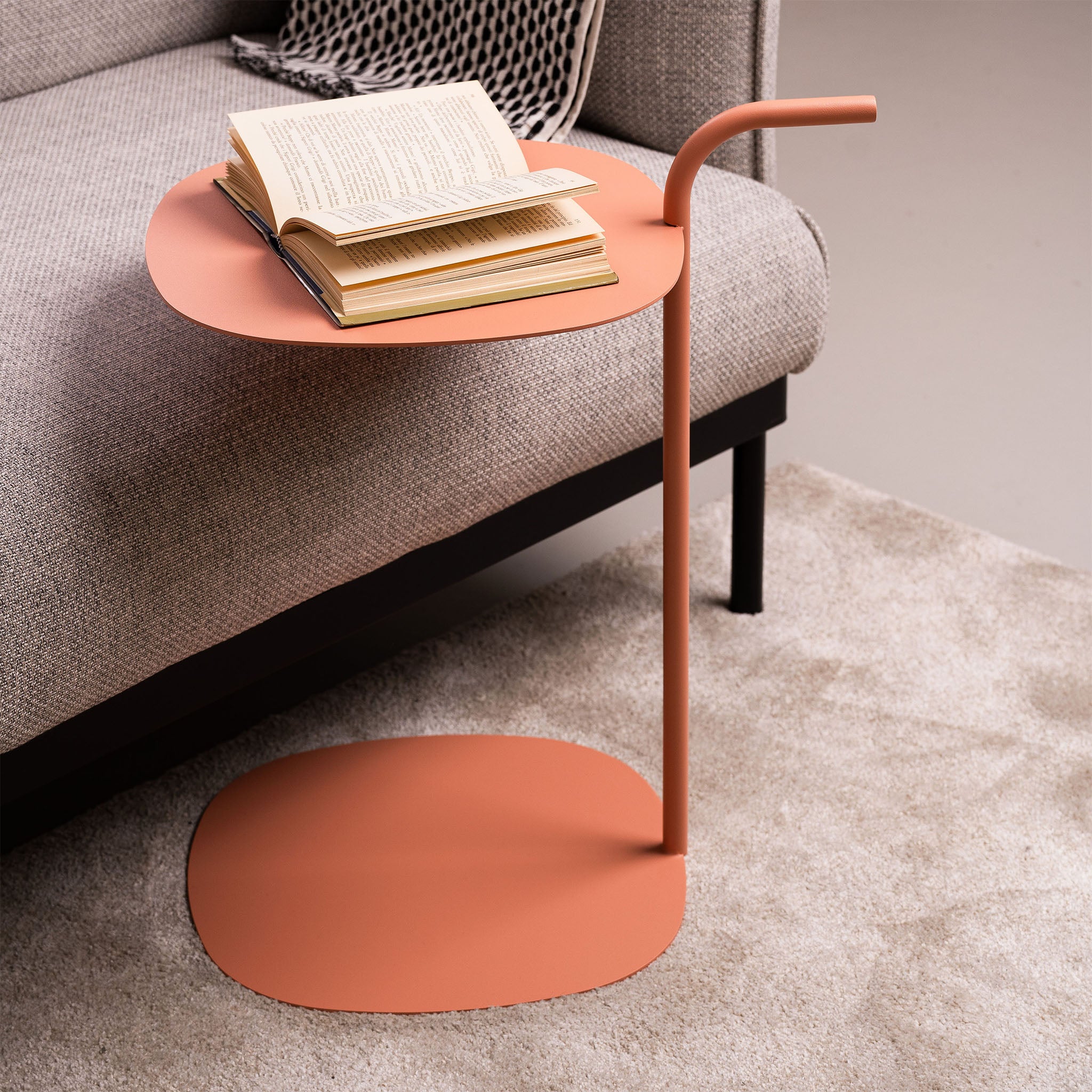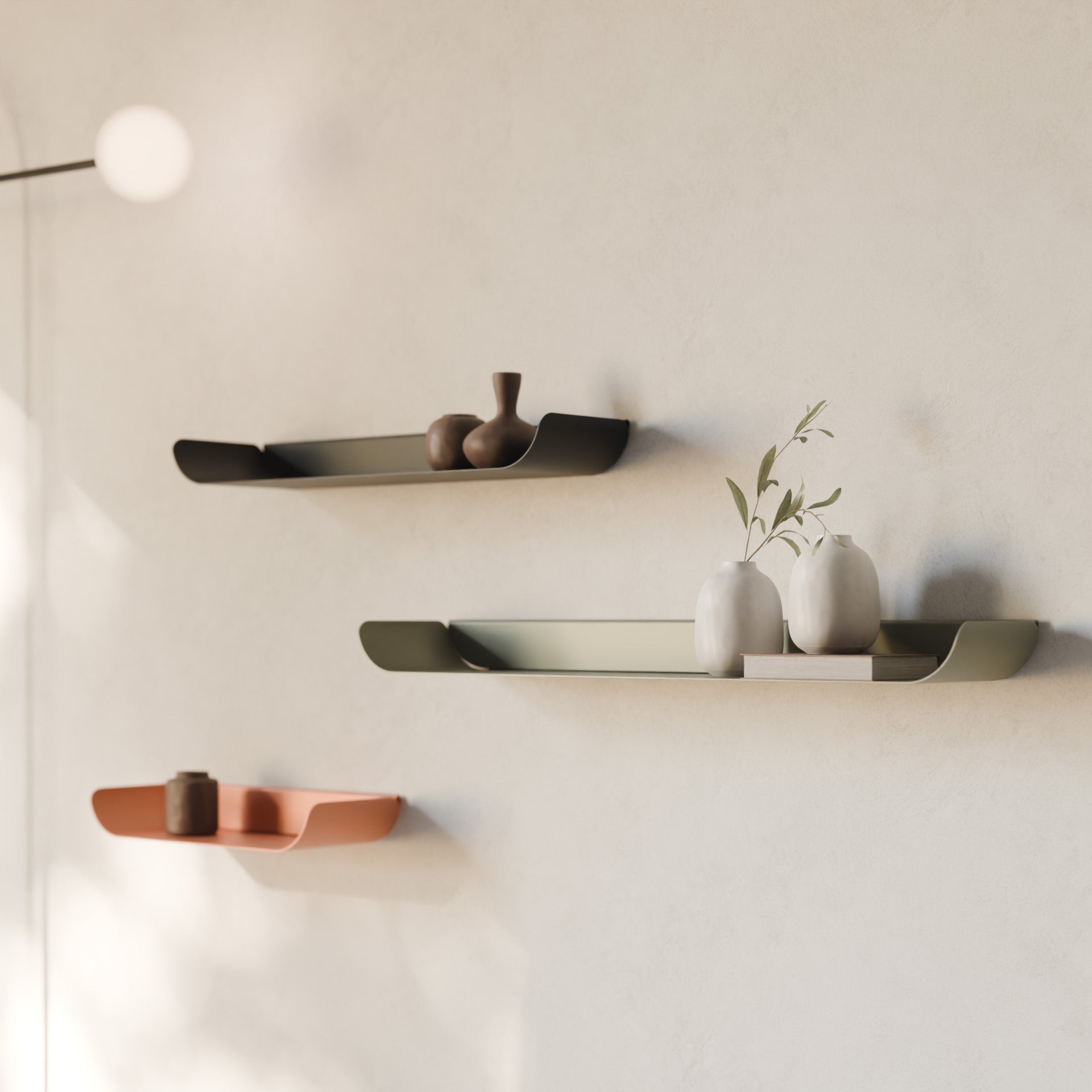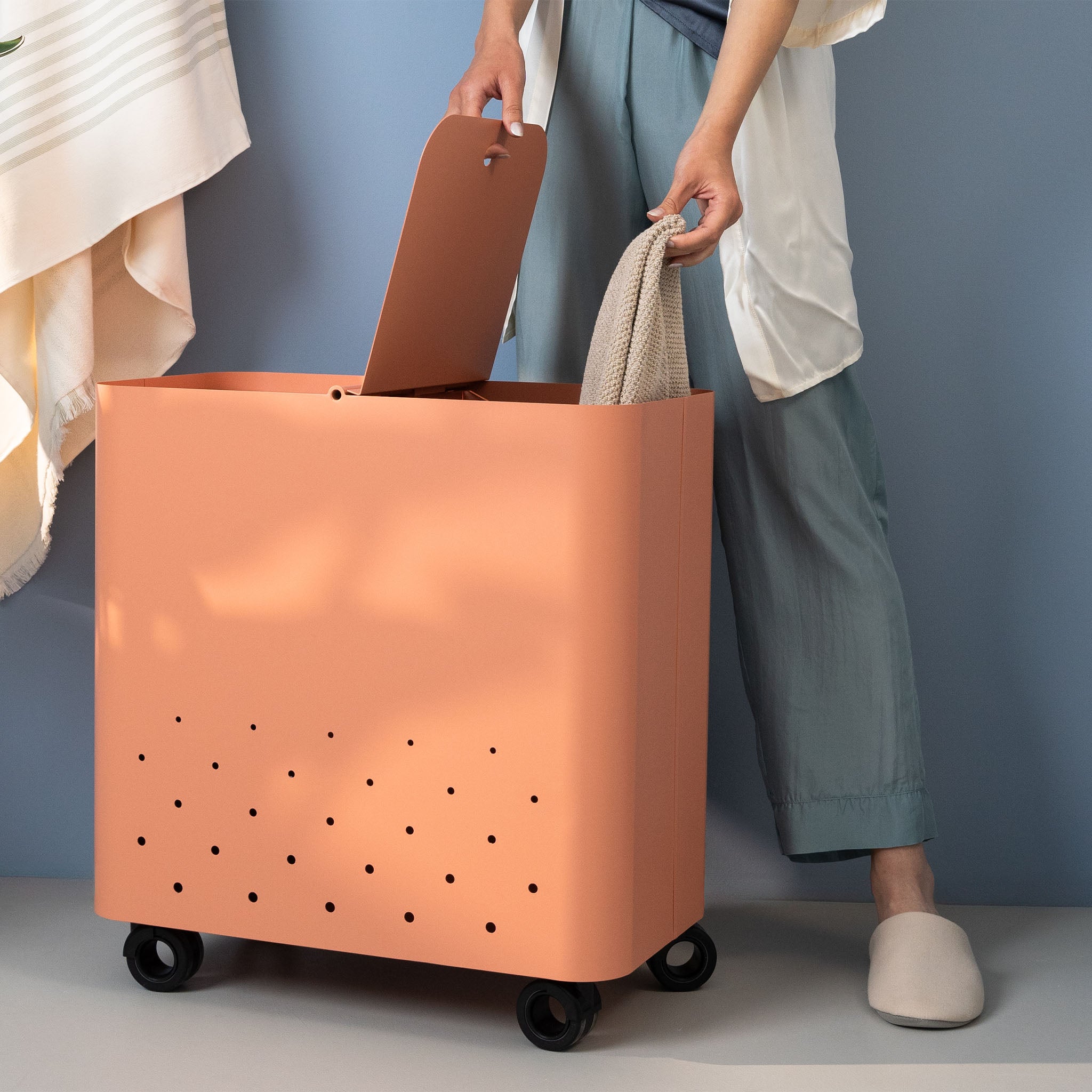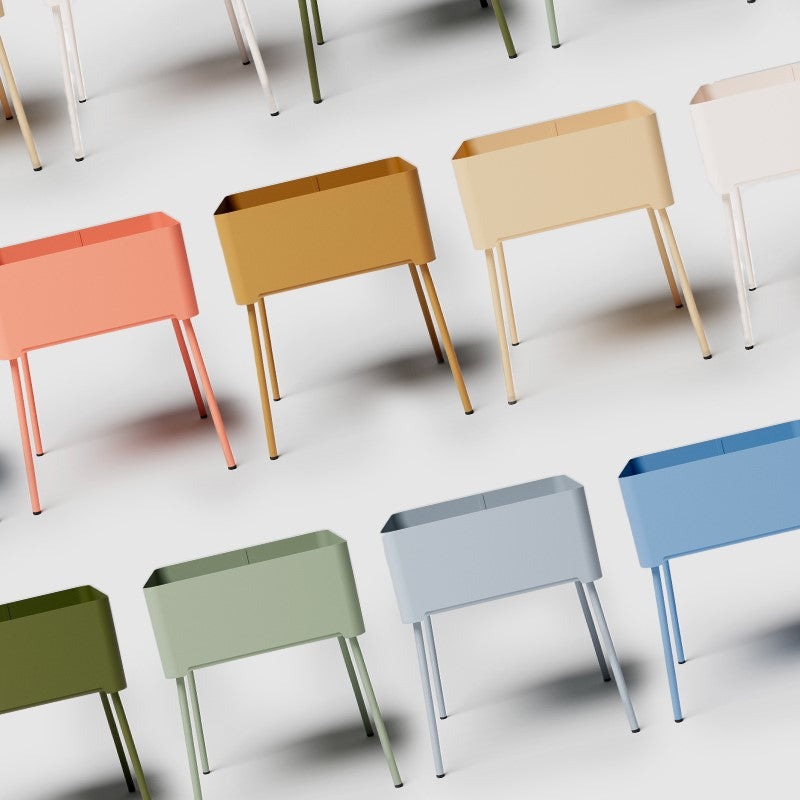Guidelines
General indications
Product Type
Given the digital nature of our platform (online sales) Hiro recommends the production of small furnishing accessories and objects for home design such as, for example: coffee tables, tables, stools, multipurpose containers, trays, wall mirrors, table mirrors, coat racks, shelves, candle holders. Other objects could be evaluated at the discretion of the company but there is no guarantee that they will be taken on board.
Materials
For products developed with Hiro, the use of metal (carbon steel, stainless steel, aluminum) is an essential condition. This is because we have extensive experience in metalworking and want to directly realize your projects. In this way, we can maintain lower prices and give you greater guarantees of control over the production process. Furthermore, it is a material suitable for multiple processes and cheaper than other materials. You can combine metal with wood, glass and mirrors. If you want to evaluate other metals such as brass or copper, in your project, contact us to check the feasibility. Likewise, if you need to use other materials in addition to wood and glass, we invite you to contact our technicians.
We are always looking for new materials and processes, so that we can provide you with more possibilities in your projects.
Processing
Some processes are not available for the objects you produce with Hiro, precisely because of our characteristic of dealing with medium-small batches.
For example, casting and molding are two processes that are too expensive and complex to be suitable for small production runs. However, there are alternative possibilities that can bring very similar effects, our technicians can advise you on how to review your project to use simpler and cheaper processes.
Discover below all the types of workmanship and their technical specifications. If you do not find the workmanship you are looking for or the dimensions of your object do not allow it, contact us to verify possible changes to the project. We will be happy to find, together with you, the solution best suited to your needs.
Processing
Welding
Welding is a process that allows the union of two joints by melting them or by using filler metal. The technologies we use are:
MIG/MAG welding
TIG welding
Weldability of metals
Be careful because not all materials have the same weldability. Steels, in general, have a greater weldability than other materials. Hiro reserves the right, in the design phase, to evaluate the feasibility or otherwise of this process for materials other than steel.
Aesthetics
Consider that the welds can be “ground” or “visible”. In the first case, no union of the pieces will be visible and the final result will be almost the same as a single piece. In the second case, the welding bead is visible.
Measures and limitations
There are no particular limitations in the use of welding except, as already indicated, regarding the type of material. In any case, it is necessary to evaluate the project to perform the most appropriate type of welding (both with regard to the aesthetic aspect and for questions of mechanical stress). Our technicians will be able to advise you on the best type of welding. If you want, you can indicate on your project whether you want a welding with a visible joint or ground.
How you can use it
Welding allows you to create different types of "structures" by joining two steel profiles together. This is the most "classic" system for building different types of furniture objects.
Folding
Bending is a mechanical process in which an object is deformed by applying forces to it to obtain flat semi-finished products. Bending is an economical and versatile process. When possible, for economic reasons, it is better to use bending instead of operations such as welding or mechanical fastenings (screws, etc.).
Bending with press brake
Since there are no costs for the production of the mold, it is convenient to use this technique in the case of limited production.
Sheet metal bending from a mold
Die bending is performed using a die mounted on a press. It is the solution generally used for processing large quantities of pieces, since a consistent production amortizes the initial costs of the die and allows easier "series" production.
At the moment, Hiro does not allow the possibility of “bending from a mold” given the high costs that cannot be reduced by an adequate economy of scale. To obtain some machined details (e.g.: curvatures, cambers, etc.) you can always use “sheet turning” (see point below).
Measures and limitations
You can make "U" or "V" bends. Remember that with this process you do not obtain "sharp edges", the bending profile must always be considered. The minimum bend is strictly linked to the thickness of the sheets, the size of the final piece and a series of other factors that must be calculated for each project.
How you can use it
With bending you can build many furnishing elements: square trays, object holders, candle holders, shelves, frames and any other object in which you have foreseen a “flat curve”.
Punctuation
This is a cheaper process than laser cutting when there are many holes. In addition, with this process, small deformation operations can be performed such as bosses or similar for decorative purposes (patterns, etc.).
Measures and limitations
The permitted sizes for this type of processing vary according to the type of material and the thickness of the sheets to be processed.
How you can use it
You can create decorative “patterns” such as embossed sheet metal. You can also create perforated surfaces with a “net” effect.
Metal turning
Processing similar to stamping but with significantly lower costs for the equipment. Spinning (or lathe drawing) is a metalworking process that involves the deformation of the metal in sheet or plate by forcing a metal disk against the walls of a mold, in order to obtain an axially symmetrical artifact.
Essentially any ductile metal can be formed through this process: iron, aluminum, copper, brass, steels of various types up to stainless steel and special steels. The diameter and depth of the formed parts are limited only by the size of the equipment available.
Measures and limitations
For all materials, the expected thicknesses range from a minimum of 0.8 mm to a maximum of 3.0 mm. It is also possible to work with micro-perforated iron and stainless steel sheets.
How you can use it
Using this technique, the most diverse objects are created: lamps, vases, cups, etc...
Calandatura
Calendering allows you to shape metal sheets or metal profiles by passing them through rollers with parallel axes arranged in such a way that the sheet of metal, in passing between them, follows a circular path. Ideal for circular or conical profiles (open or closed).
Measures and limitations
The permitted sizes in these processes depend on the thickness of the sheet metal and the radius of curvature. Consider a minimum diameter of 120 mm.
How you can use it
Ideal for circular or conical profiles (open or closed). Such as vases, flowerpots, lamps.
Sheet metal laser cutting
Cutting of sheet metal (steel, stainless steel and aluminum) using laser technique. In addition to delimiting a perimeter, it is possible to perform a pattern or design decorations.
The operation basically consists of a thermal process with which the laser beam melts the material to be cut. One of the main characteristics is the precision and cleanliness of the cut edge, which is perfectly smooth and clean. Basically, this technology is applicable to all metal materials.
Measures and limitations
Carbon steels can be cut up to a thickness of 20 mm, while for stainless steels the maximum thickness is 15 mm. Aluminum alloys, on the other hand, can be easily cut up to a thickness of 10 mm per sheet.
How you can use it
Laser cutting is essential for many parts of your project. It largely replaces manual cutting where greater precision is needed. However, for small batches and simple perimeters, manual cutting with subsequent finishing processes may be more convenient. Laser cutting allows you to obtain particular shapes and carve designs on flat sheets.
Tube laser cutting
The technology is always the same as the “laser” described above. In this case it involves cutting “tubes” and profiles of various kinds: round, elliptical, square, rectangular, flat-oval.
You can efficiently work aluminum, stainless steel, iron. In addition to making holes, slots, and step cuts, you can create shapes that are otherwise difficult to obtain without using molds.
Measures and limitations
Circular section: min. diameter 12 mm / max 120 mm.
Rectangular section: diagonals 140 mm with maximum difference between sides 100 mm.
How you can use it
You can create profiles to build coat racks, chairs, small bookcase structures.
Pipe bending
Tube bending using numerical control technology. Regular or irregular curves can be made.
Measures and limitations
Limitations vary depending on thickness and radius of curvature. Contact our technicians to verify.
How you can use it
Chairs, seats in general, curved profiles.
CNC Turning
Turning is a process of removing material from a solid. Depending on the position of the tool, it is divided into:
External turning: machining of the external part of the piece
Internal turning: machining the inside of a hollow piece
The workpiece can also be clamped eccentrically for turning eccentric parts.
Measures and limitations
This process does not present any particular contraindications, the limits are defined by the maximum sizes that can be worked by numerically controlled machines.
How you can use it
You can create vases, containers, object holders, candle holders and other furnishing elements.
Finishes
RAL is a term used to define a standardized color scale used mainly in the field of paints and coatings.
Upon request, we can provide special paints and finishes.
Wire
Wire processing (or “rod”) refers to a series of operations performed on a circular section bar. In particular, reference is made to bending processes that allow the “wire” to be shaped differently. It is performed automatically by numerically controlled machines (CNC). Rods and special profiles (flat, oval) are processed.
Measures and limitations
Rods up to a diameter of 12 mm can be processed. Steel wire can be cut from a minimum size of 5 mm up to 3 m.
How you can use it
It is used to create hooks and supports but also structures of furnishing objects such as chairs and stools, handles, etc...
Materials
Metals
Stainless steel
Carbon steel (iron)
Aluminum
Wood
Wooden parts can be applied to your projects:
Solid wood (larch, fir)
Multilayer and veneered (oak, ash, black walnut, poplar, fir, pine, birch, beech, okumè, iroko)
Laminate
Lacquered MDF
Glass
You can use glass sheets in your projects. We do not deal with glass with special processes (e.g. blown glass). You can choose between:
Clear glass
Extra clear glass
Wired glass
Special glass (smoked, sandblasted, sun mirror, etc...)
Mirrors
You can apply mirrors with different finishes to your projects.




